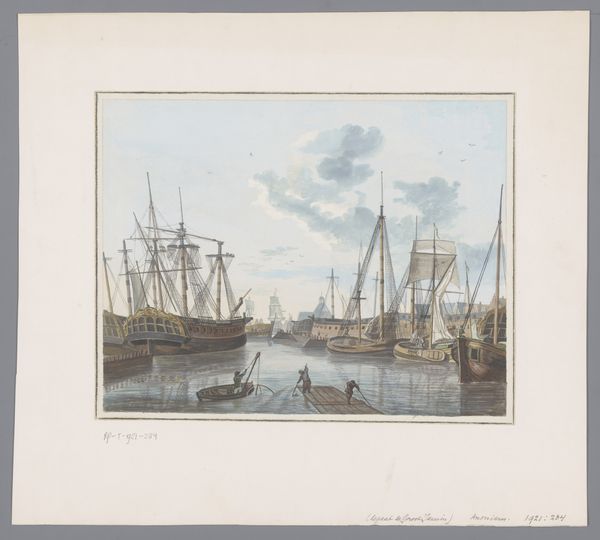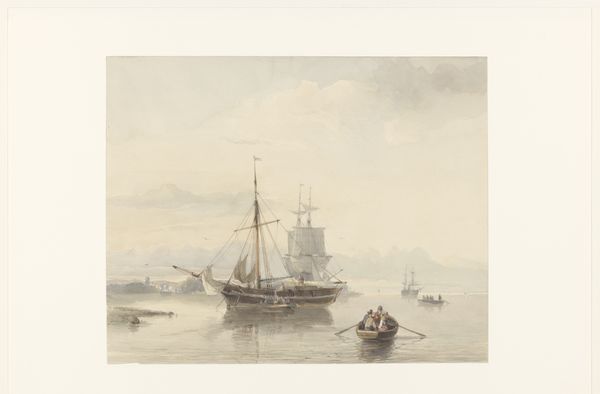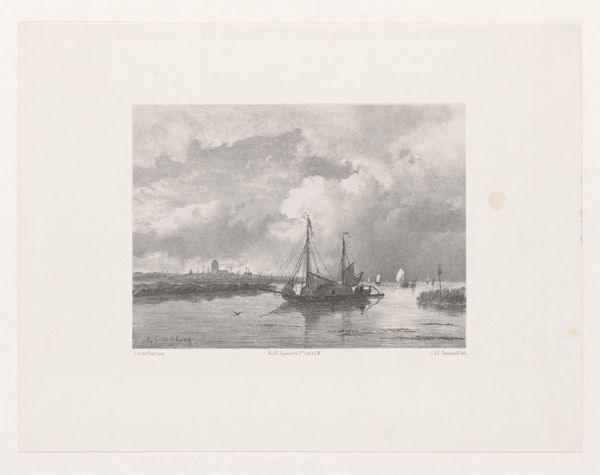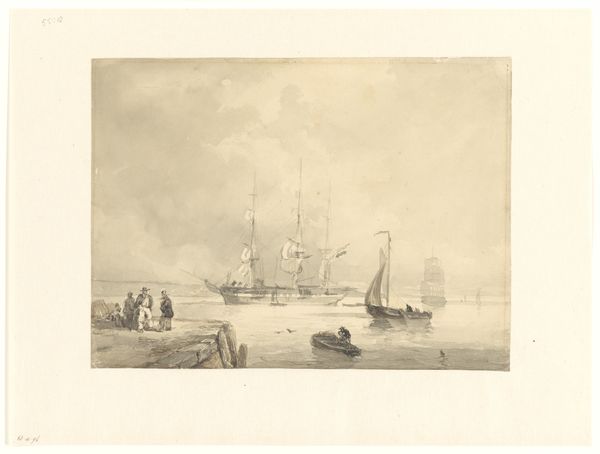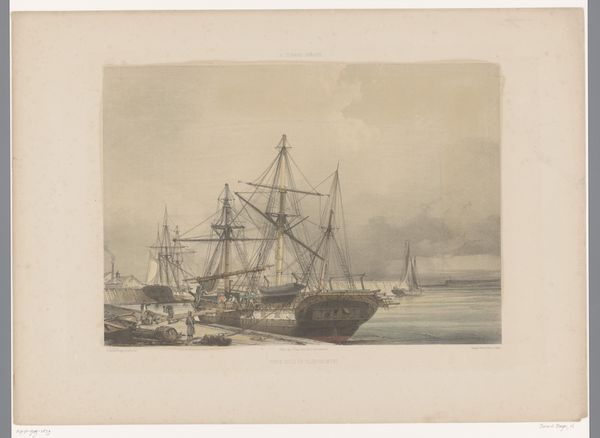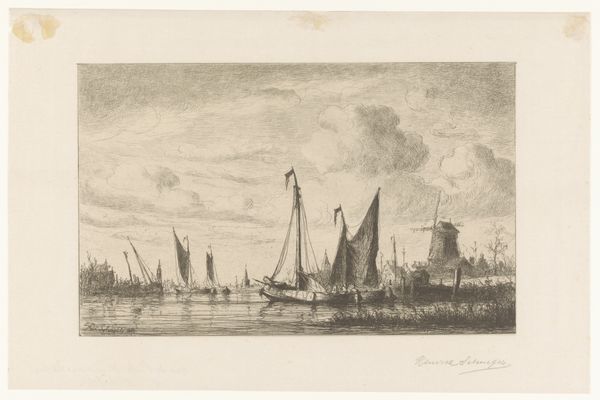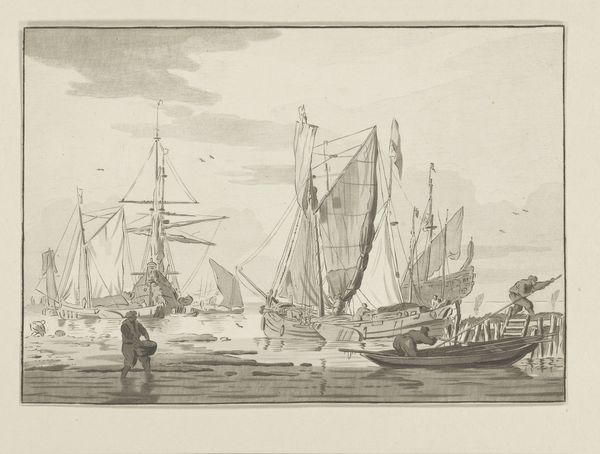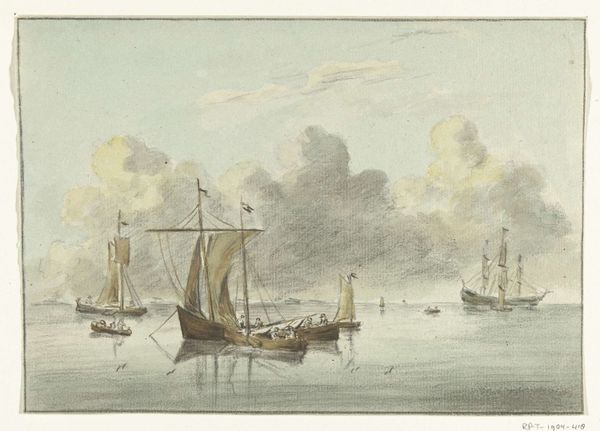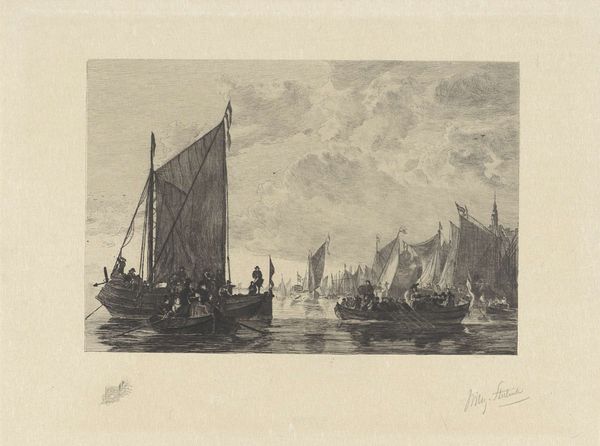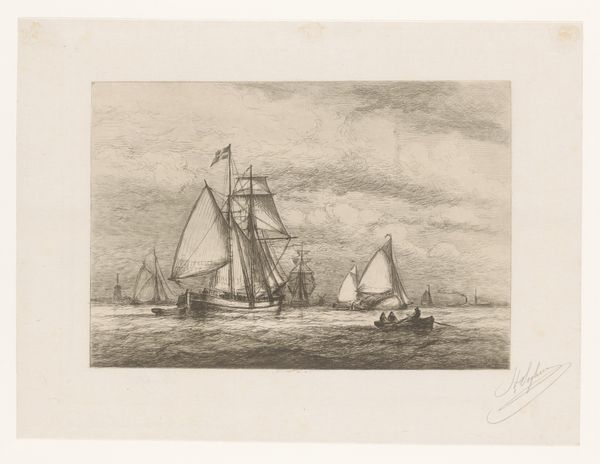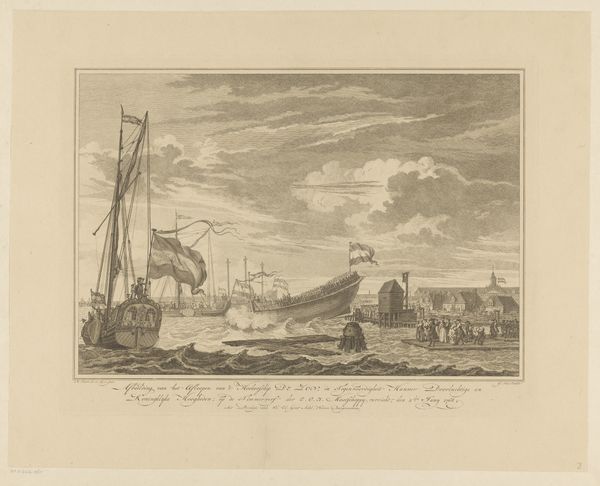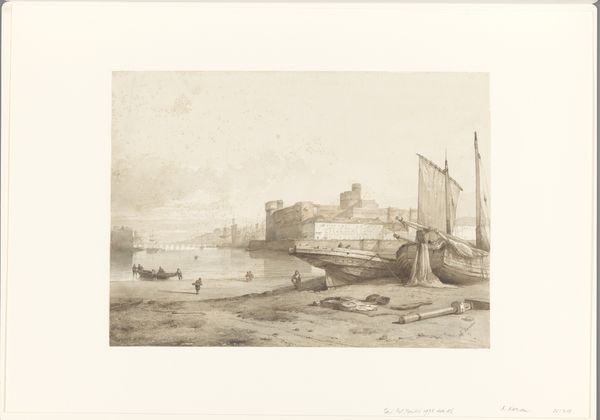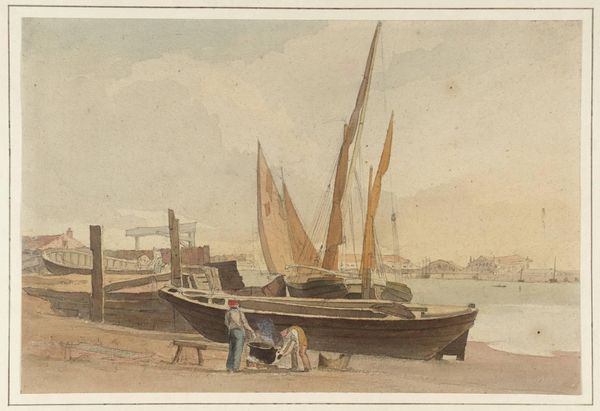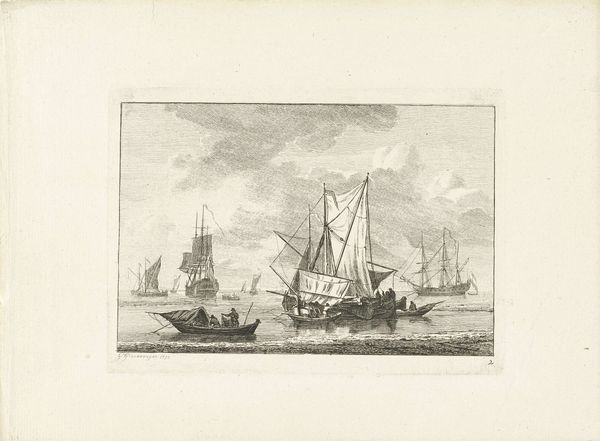
painting, watercolor
#
painting
#
landscape
#
watercolor
#
romanticism
#
watercolour illustration
#
genre-painting
#
realism
Dimensions: height 234 mm, width 276 mm
Copyright: Rijks Museum: Open Domain
Curator: Immediately, I notice the subdued palette; it's quite muted, almost monochromatic. There’s a certain melancholic stillness. Editor: This is Hendrik Abraham Klinkhamer’s "Ship in the Ice on a River by a City," created around 1845. You can currently find it at the Rijksmuseum. What interests me most here is the scene, and the labor that the composition foregrounds. Curator: Labor, yes, I see those figures hauling goods… their effort seems at odds with the serene, almost dreamlike quality of the icy scene, like figures in a frozen dreamscape. Editor: Exactly! Look at the social context: the frozen river halting typical routes, yet commerce continues, adapted to harsh conditions. The materiality of their wares, likely food or trade goods, shows a dependence on natural resources and human exertion. Klinkhamer depicts an economic engine. Curator: It’s also the geometry that draws my attention. The verticality of the ship’s masts against the flat horizontal plane of the ice and the skyline. Notice the contrast between the ship’s rigid form, almost geometric, and the more organic shapes of the clouds, softened by the watercolor medium. Editor: Indeed. But what were the implications of water color for broader painting trends at the time? This piece shows painting becoming democratized and commodified through smaller works on paper. It challenges hierarchies that favor larger oil paintings made for elite patrons. Curator: An interesting perspective. For me, it's more about the tonal balance—how Klinkhamer achieves a sense of depth using only subtle gradations of color. The composition pulls your eye to the ship. Editor: Yes, a shift to a merchant fleet suggests a transformation from natural resource dependence to industry. I suppose those struggling figures down there highlight a necessary transition toward industrial economies and markets. Curator: We could argue the artist's careful execution elevates a commonplace scene to something poetic, maybe even sublime, while capturing fleeting beauty under the veil of wintry light. It speaks of endurance against the elements. Editor: For me it shows ingenuity amid economic restrictions and the drive for a stable food and goods supply using alternative channels that reveal much about how regular people lived and adapted. Curator: I find it captivating how its formal elements can resonate so profoundly, almost echoing through time. Editor: And how we come to see materiality of an economy etched into a fragile painting.
Comments
No comments
Be the first to comment and join the conversation on the ultimate creative platform.
